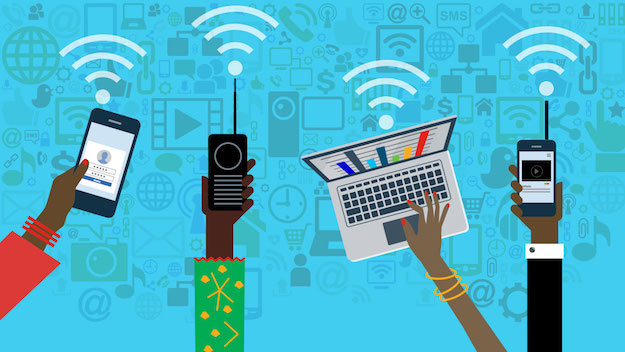Connecting to the Internet allows us to do a lot of things from chatting, online shopping, posting on social media, sending e-mails, checking weather forecasts, and playing a game, to doing business with other people. There is so much more on this list, but you get the gist.
We now live in a fast-paced digital world and most of our activities on a day-to-day basis rely on the Internet. It has helped revolutionize the way we communicate. Opportunely, information technologies have pushed fundamental change throughout our society and that includes education, healthcare, government, business, and more. What seemed to be a luxury before is not a necessity. According to Statista, the number of fixed broadband subscriptions across the United States from 2000 to 2020 has already reached over 120 million.
These statistics show that there is a growing upward demand for Internet connection in the coming years. Exponentially, it will continue to skyrocket and while the current technology (WiFi) is functional, we are eventually going to need a better connection. LiFi technology is an emerging wireless system that utilizes light as a signal to transmit data at a very high speed. With the increasing number of Internet users, this innovation can help avoid oversaturation and other interference.
What Exactly is LiFi?
If you haven’t encountered LiFi (short for Light Fidelity) yet, this was introduced and discussed by German Physicist and Professor Harald Haas from the University of Edinburgh during his TED Talk Global in 2011. He highlighted the newest piece of technology that can revolutionize our Internet connectivity. LiFi is able to transmit high volumes of data at a high-speed capacity with only the help of a light source.
Facilitating the rise to prominence of the emerging technology, Haas earned the moniker “The Father of LiFi”.
His field of research has always been around wireless communications.
Currently, the WiFi technology that we have is dependent on radio frequencies and routers. However, it has limitations and restrictions in terms of bandwidth capacity and interference.
Imagine a world where every light connects you to the Internet. This is what LiFi technology is.
According to pureLiFi, a company working on the research and development of the technology, LiFi is bidirectional and comprises multiple light bulbs that form a wireless network. It is substantially the same as how WiFi functions only that the new tech utilizes light.
LiFi can multiply the bandwidth and speed 100 times faster. It is even more efficient because there is no need for antennas, radio circuits, receivers, or routers to make it work.
Visible Light Communication (VLC) origins can be traced back to Graham Bell’s Photophone in 1880. Haas described a future when billions of light bulbs are deployed across the world and used as wireless hotspots for everyone.
How Does It Work?
LiFi has a promising goal to provide overhead illumination with internet connectivity all over the world. It is far safer, way faster, cost-efficient, and energy-saving. Even though the tech is still in the research and development phase, it already presents promising benefits.
So, how exactly does LiFi work?
LiFi utilizes visible light for data transmission. It can be a fluorescent light or a LED light.
LED is the more optimum and efficient VLC light source because it also acts as a semiconductor that can amplify intensity.
LiFi relies on the constant stream of photodiodes emitted by the LED light source to be able to
transmit data.
The current and optical output is modulated at extremely high speed to strike a balance between household illumination and VLC light source. This modulation will be detected by the photodiode device and be converted into an electrical current. This flickering won’t affect you because it is super fast that is unperceivable by the human eye.
Once the device received and demodulated the signals, they are converted into a continuous stream of binary data which contains images, audio, text, videos, and any application.
It can even work on LED TVs, car lights, streetlights, lamps, light bulbs, and more.
The Benefits of LiFi
LiFi is more efficient. It taps into an already-illuminated LED light and helps cut down energy consumption and cost. It is also inexpensive to deploy and easy to install.
It is also more secure because, unlike WiFi, light cannot pass through the walls. The transmitted data cannot be easily breached and the connection is only available to users within a room or a building.
LiFi transmits data at impressively high speeds. According to The Independent, Independent.co.uk, UK scientists achieved a new breakthrough and reported that LiFi can transmit 250 times faster than superfast broadband.

